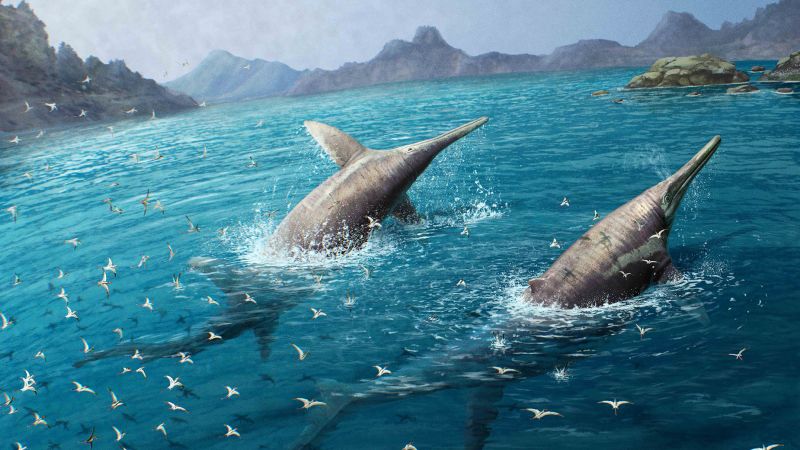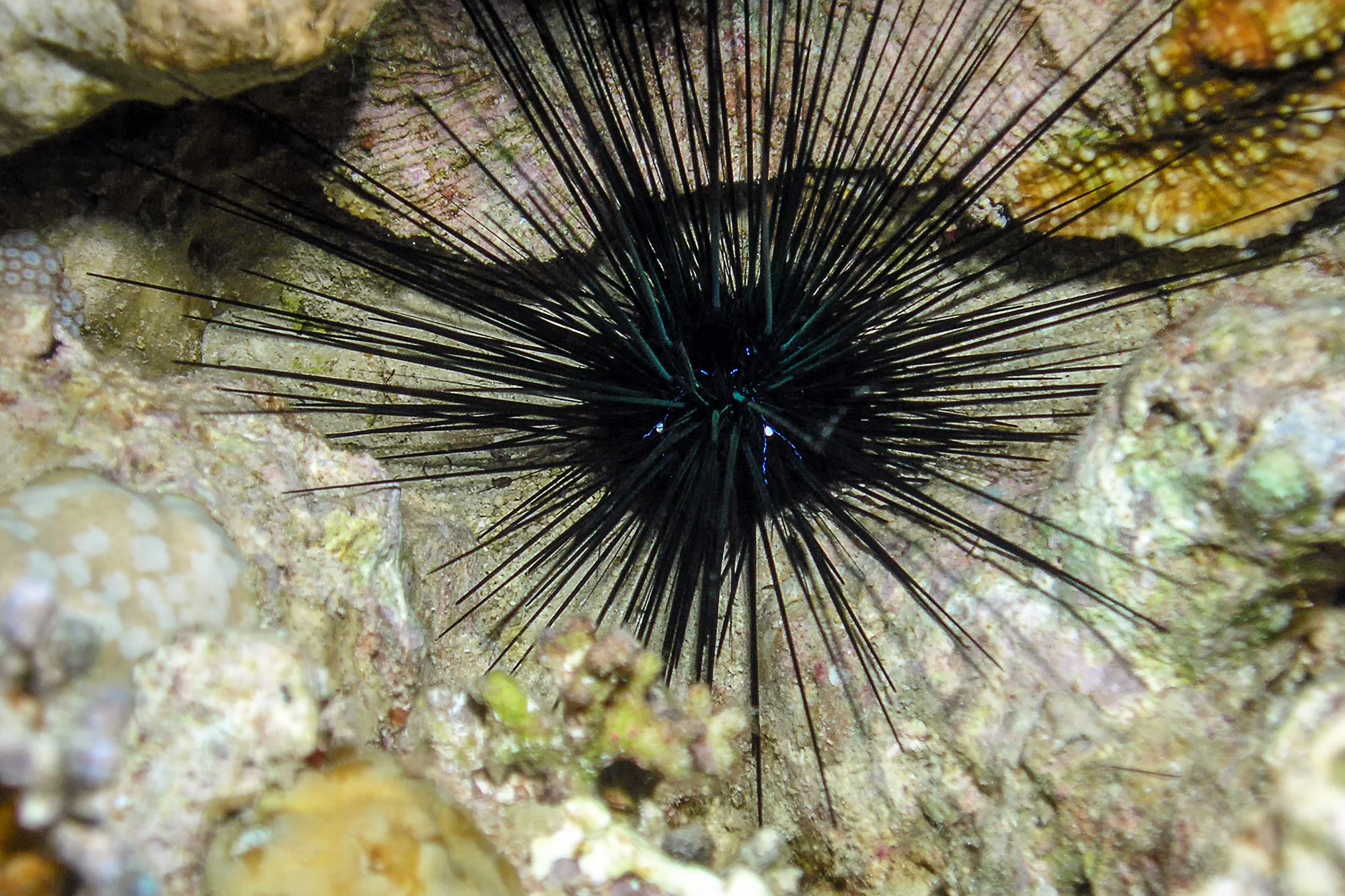カリブ海とフロリダの東海岸で 2022 年に発生したトゲの長いウニの大量死の原因として、単細胞生物であるスクチコキシルが特定されました。 これらのウニはサンゴ礁の健康に不可欠であり、この発見は、繊毛虫の存在、その成長条件、および他の種への潜在的な影響について疑問を投げかけています. 長くてとげのあるウニ (Diadema antiillarum) の写真。
カリブ海からフロリダの東海岸までのサンゴ礁の健康を脅かすトゲウニの大量死は、繊毛虫と呼ばれる単細胞生物によって引き起こされました。
カリブ海とフロリダの東海岸沿いでトゲの長いウニを一掃した殺人者の捜索は 2022 年に終了しました。 南フロリダ大学の海洋科学大学の著名大学教授であるミア・ブライトバートが組織した研究チームは、サンゴ礁の健康に不可欠な海洋動物の大量死の原因として、毛様体と呼ばれる単細胞生物を特定しました。
彼らの調査結果は、4 月 19 日に Nature 誌に掲載されました。
Ciliate culture viewed under the microscope. Credit: Mya Breitbart USF College of Marine Science
“We’re beyond thrilled to get to the bottom of the 2022 mystery and a bit stunned we did it so quickly,” said Breitbart, senior author on the Science Advances study and an expert in marine genomics. “We had a great team in place and the tools needed to do the ocean science equivalent of a forensic investigation.”
Ciliates are microscopic organisms covered in hair-like structures called cilia that help them move and eat. They are found almost anywhere there is water and most are not disease-causing agents. However, this specific species of ciliate – called a scuticociliate – has been implicated in die-offs of other marine species, such as sharks, in the past.

Photo compilation showing the same sea urchin before and after infection with the ciliate in the USF aquarium research facility. Credit: Makenzie Kerr USF College of Marine Science
Examining urchins collected from 23 sites in the Caribbean, the research team used a series of techniques to confirm the source of the die-off event.
After identifying the ciliate in every affected urchin specimen using genomic techniques, the team grew ciliates in the lab and performed infection experiments at the USF College of Marine Science. When the pathogen was introduced to otherwise healthy urchins in an aquarium tank, the urchins died within a few days – replicating what was taking place in the ocean and confirming the ciliate as the disease source.

DaSc-affected sea urchin, Aruba, August 2022. Credit: Ian Hewson Cornell University
“We’re excited to share this information with everyone, from reef managers to additional scientists so we can explore it further and try to stop its spread,” Breitbart said.

Mya Breitbart (USF) viewing the ciliate culture by microscopy. Credit: Makenzie Kerr USF College of Marine Science
The long-spined sea urchins inhabit shallow tropical waters and feed on algae that would otherwise destroy a reef. They began to lose their spines within days of contracting an unknown disease and died in droves starting in January 2022.
A similar die-off event took place in the early 1980s, which wiped out 98 percent of the long-spined sea urchin population. The culprit of that die-off remains a mystery.
Breitbart first got the call about the unfolding die-off at the end of March 2022. She immediately assembled a team consisting of Ian Hewson, lead author on the publication and a marine ecologist at Cornell University; Christina Kellogg, a microbiologist from the U.S. Geological Survey in St. Petersburg, Fla. who has worked extensively on coral reef diseases; and USF graduate student Isabella Ritchie.
“At the time, we didn’t know if this die-off was caused by pollution, stress, something else – we just didn’t know,” said Hewson, an expert in diseases that cause mass die-offs of sea stars, who flew from New York to the Caribbean Islands to observe the situation.
Even with the source of the mysterious die-off uncovered, questions still remain. For example:
- Is this ciliate new to the area, or was it there prior to the die-off?
- If it has been there, what environmental conditions favored its growth and why did it infect the urchins?
- Can it affect other species of urchins?
「私たちが持っている理論の1つは、繊毛虫が最初に衰退し始めたときにカリブ海で観察された高生産性条件下でよく成長したということです」とケロッグは言いました. 「また、この絶滅が発生した地域と、イシサンゴの組織喪失病のためにサンゴ礁が減少している地域の一部が重複しているという事実にも興味があります。」
参考文献:「スクチコシル酸剤がカリブ海でガンジラミの大量死を引き起こす」 Ian Hewson、Isabella T Ritchie、James S Evans、Ashley Alterra、Donald Berenger、Irene Bowman、Marilyn Brandt、Kayla A. バッドとロリオ A. カマチョ、トーマス O. コーンウェル、ピーター D. キマニ・A・キットソン=ウォルターズ、パトリシア・クレイマー、ジュディス・C・ラング、ハリラオス・レッシオス、ローレン・リディ、デヴィッド・マランシック、スティーヴン・ニムロッド、ジョシュア・T・パターソン、マリット・ピスター、イザベル・C・ロメロ、リタ・セラレス=ブラスコ、モリア・LB・セビア、ウィリアムシャープ、マシュー・ソウザ、アンドリーナ・バルデス=トリニダード、マレン・ファン・デル・ラーン、ブライアン・ビジャノバ=クエバス、マリア・ビジャルパンド、サラ・デ・フォン・ヒューン、マシュー・ウォーハム、トム・ウェアーズ、ステイシー・M. Yanong、Soumira Zambrano、Alise Zimmerman、Mia Breitbart 2023 年 4 月 19 日 ここから入手できます。 科学の進歩.
DOI: 10.1126/sciadv.adg3200
この研究は、国立科学財団、持続可能な未来のためのアトキンソン迅速対応センター、AGGRA、国立海洋大気庁、国立魚類野生生物財団、フロリダ キーズ海洋保護区、およびフロリダ魚類野生生物委員会によって資金提供されました。

「アマチュア主催者。ビールの伝道者になりたい。一般的なウェブファン。認定インターネット忍者。熱心な読者。」







More Stories
古代の発掘により、既知の最大の海洋爬虫類が発見されました
スターリンクミッション 水曜日の夜、KSCから
天の川銀河最大のブラックホールが地球近くに潜む